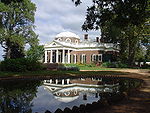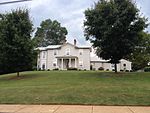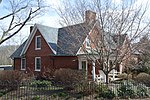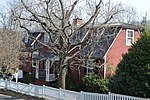Michie Tavern
Drinking establishments on the National Register of Historic Places in VirginiaHistoric American Buildings Survey in VirginiaHouses in Albemarle County, VirginiaHouses on the National Register of Historic Places in VirginiaJourney Through Hallowed Ground National Heritage Area ... and 5 more
Museums in Albemarle County, VirginiaNational Register of Historic Places in Albemarle County, VirginiaPages with plain IPATaverns in VirginiaVirginia Historic Landmarks
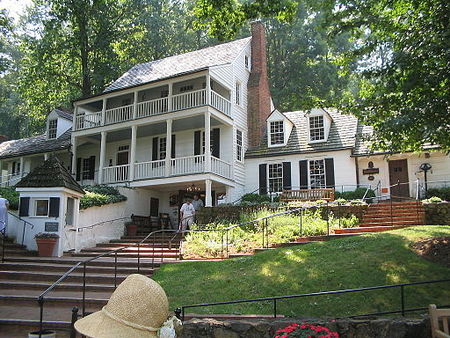
Michie Tavern (Pron: /ˈmɪki/), located in Albemarle County, Virginia, is a Virginia Historic Landmark that was established in 1784 by Scotsman William Michie, though in Earlysville. The Tavern served as the social center of its community and provided travelers with food, drink and lodging. It remained in operation, in the Michie family, until 1910, when it came to be owned by the Commonwealth of Virginia. In 1927, the Tavern was purchased by Josephine Henderson, who had it moved seventeen miles from Earlysville to its present location, close to Monticello.
Excerpt from the Wikipedia article Michie Tavern (License: CC BY-SA 3.0, Authors, Images).Michie Tavern
Thomas Jefferson Parkway,
Geographical coordinates (GPS) Address Nearby Places Show on map
Geographical coordinates (GPS)
| Latitude | Longitude |
|---|---|
| N 38.008672222222 ° | E -78.465152777778 ° |
Address
Michie Tavern parking area
Thomas Jefferson Parkway
22902
Virginia, United States
Open on Google Maps


